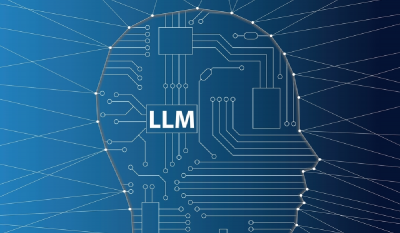XaaS is a standard term for ‘everything-as-a-service’ or ‘anything-as-a-service.’ It is similar to some examples in Algebra, where X could be anything and everything. For everything-as-a-service (XaaS) can transform any IT function into a benefit for enterprise consumption.
XaaS can be anything that can turn any function involving the Internet into a service for enterprises’ consumption. Instead of setting up their servers, the organizations can get virtual private server providers’ services. The same goes for other IT needs.
Some examples of XaaS are software-as-a-service (SaaS), infrastructure-as-a-service (IaaS), and platform-as-a-service (PaaS). It all started back with these cloud computing terms that give a clear view of how ready-made software is used as a platform for its development or could provide a comprehensive computing infrastructure via networks. With times, other services emerged, and this is how the term ‘as-a-service’ started associating with multiple digital components, e.g., data, security, communication, etc.
Moreover, Anything-as-a-Service (another name for XaaS) is confined not only to digital products. It can practically apply to everything from food to medical consultations, without leaving your home or office, by utilizing certain online services. Hence the word “Everything” is in the name.
Advantages and amp; disadvantages
There are several reasons why companies like to use the XaaS model for their different services:
- Accessing newer technologies: Earlier, adopting new technologies seemed difficult because of its high costs as companies needed to allocate significant human resources to study and work with the technologies. XaaS enables businesses to test for newer solutions quickly. About 40% of the companies are using XaaS to get access to the latest technologies.
- More time for other operations: XaaS model gives the company more space to focus on what matters as it saves time and the budget allocated for a particular IT operation. The IT team need not invest its time in carrying an in-depth study on technologies but instead can focus on improving cybersecurity.
- Cost-effective: Installing any new service or any new model requires both money and time. Businesses today need not buy hardware, such as servers and other equipment; instead, they can now use IT services on a subscription basis. This lets companies save on their expenses and pay only for the services used. It also saves expenditure on infrastructure setup as they make use of providers’ resources.
Every coin has two sides, and so does the XaaS model. With all its due advantages, XaaS comes with some drawbacks such as performance issues and the possibility of downtime.
- Troubleshooting issues: It becomes difficult for the IT team to address a problem related to XaaS technology. They would need the provider’s help, which could be a challenge, depending on their technical support quality. Moreover, companies will have to ensure that the IT team is trained about such different issues.
- Downtime and performance:When the providers’ servers are down, XaaS users can no longer use the product. Several factors are responsible for XaaS uptime, such as internet connectivity or network maintenance. XaaS users would also notice that an increase in the number of users makes the system slow down.
- Risk related to cybersecurity: Third-party risks may arise when XaaS users unknowingly share data with vendors. Data sharing is something very crucial that needs to be managed and taken care of very well. An estimate states that 60% of the data breaches are primarily associated with third parties.
How are different industries leveraging XaaS
XaaS can be used in different forms by different services –
Hardware-as-a-Service (HaaS)
Managed service providers (MSP) are the hardware owners who install that hardware on customers’ sites on demand. Customers use the hardware as per the terms in service level agreements. It works similar to leasing and is compared to IaaS where computing resources are located at different MSP’s site and provides users with virtual equivalents of physical hardware.
The HaaS model is exceptionally cost-effective for small or mid-sized businesses.
Communication-as-a-Service (CaaS)
The CaaS model includes different communication solutions such as IM (instant messaging), VoIP (voice over IP or Internet telephony), video conference applications hosted in the vendor’s cloud. An organization can deploy communication apps that best serve their current needs for a particular time and only pay for their use.
This method is cost-effective and saves money on short-term communication needs.
Desktop-as-a-Service (DaaS)
Desktops work as virtual services along with the apps needed for use. Thus, a client can start working on a personal computer using the third-party server’s computing capacities (that can prove more powerful than those of a PC).
Third-party enterprise hosts the Desktop-as-a-Service (DaaS) working under a cloud-based desktop virtualization service. The third-party cloud provider takes care of all back-end resources, such as desktop storage, compute, networking, as well as the virtual cloud machines that operate the desktop operating systems.
The desktop connects the virtual desktops to end-user devices as a service provider, allowing anytime, anywhere access to desktops and applications. DaaS is a multi-tenancy provider and, like other cloud service offerings, is based on subscription.
Security-as-a-Service (SECaaS)
Security-s-a-Service (SECaaS) is an outsourced service wherein a third-party company handles and manages security. The provider integrates security services into the company’s infrastructure and, as a rule, delivers them over the Internet. The best instances of such services include anti-virus software, encryption, authentication, intrusion detection solutions, and more.
Healthcare-as-a-Service (HaaS)
Electronic medical records (EMR) and hospital information systems (HIS) made the healthcare industry evolve into Healthcare-as-a-Service. Medical treatment is becoming and developing to be more data-driven and patient-centric. It is because of the emerging technologies such as IoT, AI, wearables that the following services are accessible –
- Consulting doctors online
- 24×7 health monitoring
- Home delivery of medicines
- Availability of online reports 24×7
- Collection of test samples from home and delivery of results
The HaaS facility makes it easier for users to earn the benefits of all types of medical help.
Transportation-as-a-Service (TaaS)
Setting up different trends for modern society becomes feasible with mobility and freedom of transportation at different distances. Various apps are available to connect with transport, so a part of this industry is transforming into an ‘-aaS model.’ Some of the most common examples are:
- Car sharing– This app allows renting a car irrespective of place and time, where payment is made based on the car’s usage and the distance covered.
- Uber taxi services– Book a taxi through an app, which calculates the route’s cost in advance. Uber is planning to test self-driving planes and flying taxis and in the near future.
Thus, the TaaS model is helping to build up a convenient as well as the ecologically-friendly environment.
XaaS in nutshell
XaaS can be defined, in short, as a conceptual model consisting of all types of possible products and services that are used over networks. Introducing more XaaS ideas can be an ideal benchmark as well as one of the important strategies, especially for leading global cloud tech companies such as Microsoft and Google.
The emerging technologies and the proliferation of the e-Commerce market make the future of Everything-as-a-Service seems bright.
For more information on XaaS and the other latest technologies, visit our latest whitepapers on Technology.














